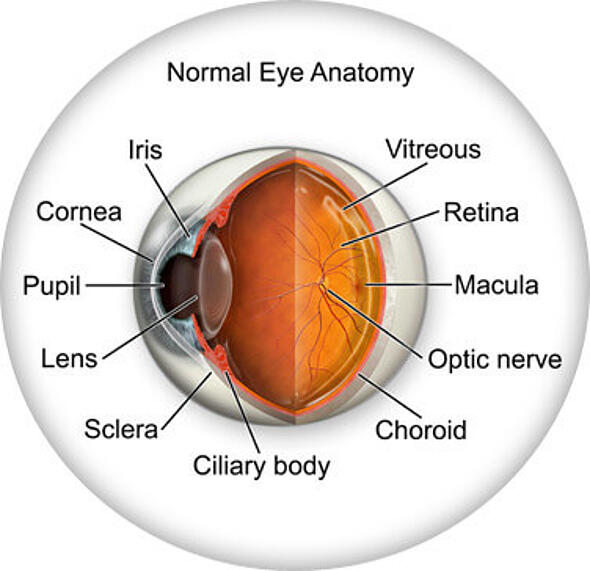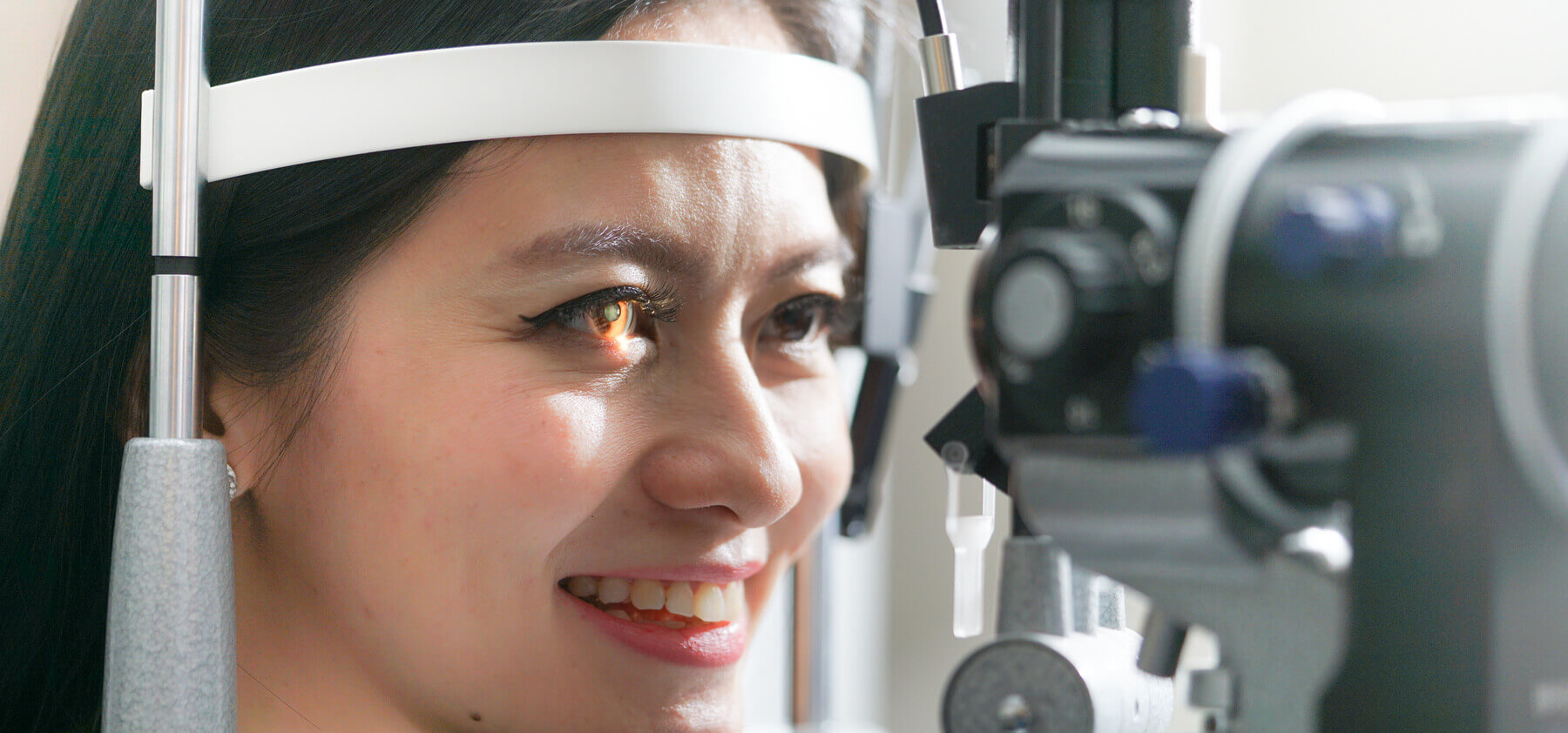Eye Anatomy

The retina:
The retina is the light-sensitive layer of tissue at back of the eye. Similar to the film in a camera, images that come through the lens are focused on the retina . The retina then converts these images into electrical impulses and sends them to the brain. The retina is comprised of photoreceptor cells called rods and cones. There are about 120 million rods in the retina , but only 6 - 7 million cones. Rod receptors are mostly located in the periphery of the eye, are highly sensitive to light, and therefore useful to detect the presence of light. The cone receptors are primarily located in the center of the retina , called the fovea, and produce colored vision and allow seeing details such as reading.
Vitreous body:
The Vitreous body is the clear jelly-like substance that fills the space between the lens and the retina of the eyeball.
Ciliary body:
The ciliary body is made up of the ciliary muscle and the suspensory ligament. This structure functions mainly to hold the lens in place, change the shape of the lens so light can be focused on the retina , and to produce aqueous humor, the fluid that causes the eye to maintain its shape.




